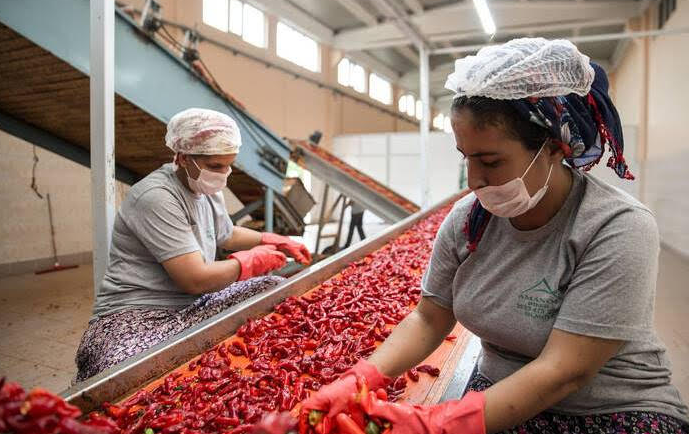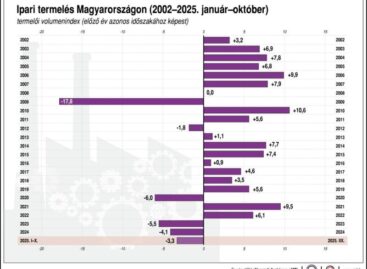Food systems account for more than one third of global greenhouse gas emissions
The world’s food systems are responsible for more than one-third of global anthropogenic greenhouse gas emissions, according to a pioneering new study published in Nature Food.

Spanning from land-use change and agricultural production to packaging and waste management, food system emissions were estimated at 18 billion tonnes of carbon dioxide equivalent in 2015. That’s 34 percent of the total, a share that is gradually declining – it was 44 percent in 1990 – even as food systems emissions kept increasing in absolute amounts.
The study, co-authored by Francesco Tubiello, a senior statistician and climate-change specialist at the Food and Agriculture Organization of the United Nations (FAO) in collaboration with researchers at the European Commission’s Joint Research Centre in Ispra, Italy, offers a treasure trove of data and, at least as importantly, presents a new data base – EDGAR-FOOD – going back to 1990 and enabling granular tracking of ongoing and future trends. The new tool, reliant on key land-use data from FAOSTAT, provides a complete and consistent data series spanning multiple sectors that will prove essential in the design of effective mitigation actions and transformational pathways to sustainable food systems.
It also offers more precise understanding and estimate of the climate effects of food production, distribution and consumption ahead of the landmark United Nations Food Systems Summit 2021 later this year. The Intergovernmental Panel on Climate change (IPCC) Special Report on Climate Change and Land recently attributed between 11 and 19 billion tonnes of emissions per year, a wide range underscoring the need to narrow our knowledge gaps.
The EDGAR-FOOD data base represents a milestone for understanding how the global food system has developed. It enables assessments of how changes in consumer behavior or technological evolution may impact food-system GHG emissions and can serve as a precious tool for researchers focusing on specific sectors as well as policy makers tasked with designing mitigation strategies that don’t merely displace emissions to other sectors.
FAO has powerful emissions data sets on agriculture and land use and is building a new one to support the work of the UN Food Systems Summit.
Key findings
Some two-thirds of the emissions from global food systems come from the land-based sector, comprising agriculture, land use and land use changes. That figure is higher for developing countries, but also declining significantly in step with decreasing deforestation and increasing downstream activities such as food processing and refrigeration.
In terms of their share of all anthropogenic GHG emissions, food systems of industrialized countries are broadly stable at around 24 percent, while in developing countries it has decreased notably – partly due to very high increases in non-food emissions – to 39 percent in 2015 from 68 percent in 1990.
Top emitters are, in order: China, Indonesia, United States of America, Brazil, European Union and India.
Production stages that bring foodstuffs to the farm gate – including inputs such as fertilizers – are now the leading contributor to overall food-system emissions, constituting 39 percent of the total. Land use and related factors contribute 38 percent, while distribution accounts for 29 percent, a share that is growing and expected to continue to do so.
Methane (CH4) accounts for around 35 percent of food system GHG emissions, broadly the same in developed and developing countries, and mostly stems from livestock raising and rice cultivation.
The research highlights how global food systems are becoming more energy intensive, reflecting trends in the retail, packaging, transport and processing sectors, whose emissions are growing rapidly in some developing countries. Industrialized countries, meanwhile, have increased emission of fluorinated greenhouse gases – which have a turbocharged effect on global warming – used in refrigeration and other industrial applications. Refrigeration is responsible for nearly half of the energy consumption by the retail and supermarket sector, whose emissions have grown more than fourfold in Europe since 1990. Worldwide “cold chain” activities account for around 5 percent of global food-system emissions, a figure expected to increase.
It also revealed that packaging now contributes about 5.4 percent of global food-system emissions, more than any other supply-chain factor including transportation. However, emissions intensity varies notably by product, with wine and beer accounting for a significant share of packaging impacts while bananas and beet sugar have higher transportation emissions.
On average, global per capita annual food-related emissions has declined by around one third to 2 tonnes of CO2 equivalent. That figure should not be understood as the same as a “consumer footprint” as these vary according to specific dietary patterns, but it can be used to benchmark national mitigation efforts to reduce GHG emissions from the food system as a whole.
Related news
Large companies expect easing inflationary pressures and decreasing public burdens
🎧 Hallgasd a cikket: Lejátszás Szünet Folytatás Leállítás Nyelv: Auto…
Read more >The GKI business climate index closed 2025 at a one and a half year high
🎧 Hallgasd a cikket: Lejátszás Szünet Folytatás Leállítás Nyelv: Auto…
Read more >KSH: industrial production decreased by 2.7 percent in October compared to the same period of the previous year, and increased by 0.5 percent compared to the previous month
🎧 Hallgasd a cikket: Lejátszás Szünet Folytatás Leállítás Nyelv: Auto…
Read more >Related news
Hungarian Confectionery Manufacturers Association: trends in 2025 and prospects for 2026
🎧 Hallgasd a cikket: Lejátszás Szünet Folytatás Leállítás Nyelv: Auto…
Read more >Fidelity Outlook 2026: Who will bring the pick and shovel to artificial intelligence?
🎧 Hallgasd a cikket: Lejátszás Szünet Folytatás Leállítás Nyelv: Auto…
Read more >This is how the lives of sole proprietors will change from January 1: the individual tax-free limit will increase to 20 million forints, SZOCHO will be transformed
🎧 Hallgasd a cikket: Lejátszás Szünet Folytatás Leállítás Nyelv: Auto…
Read more >






